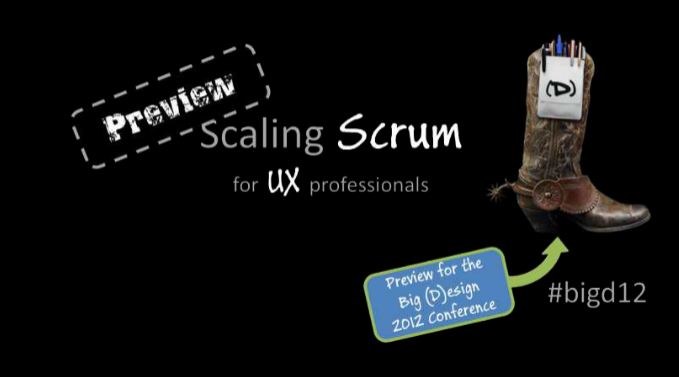w00t! Here’s one for the good guys! (The good guys being the thousands of developers (and designers) that work on the Microsoft platform and are excited about the new features in WPF and the new tooling to support it)
Cory just pointed out Somasegar’s announcement that Expression will be included in MSDN. (Well most of it, all of it if you have Team Suite) This is very exciting and I’m glad to see that this finally went this way! WPF and the Expression Suit have started to make lots of waves in traditional designer camps. It’s exciting to see and I can’t wait to see some of the cool applications that are going to come out in the next year or so!
(See: WPFBlog – from FrogDesign, Thirteen23, The NYT Reader, 3D RSS Reader)
Yeah!
Why the excitement? Because originally Expression was NOT going to be in MSDN.
I’ve been playing with the Expression Suit for a while now, I went all the way to Chicago for the official launch (post Microsoft – on my own dime), and this was one of my most popular talks when I was at Microsoft (Developer Designer Zen: Bringing Two Worlds Together). So you can imagine my frustration when Microsoft first announced that the Expression Suit would NOT be included in MSDN. (and here)
By the way, this is one of the reasons that Developer Evangelists at Microsoft are NOT part of marketing and do not have any sales quotas. (I actually heard a manager at Microsoft once ask if the DE’s should go under marketing organizationally – blah! Managers! 😉 Part of the role of the evangelists at Microsoft is to be a human face of Microsoft to the world; it’s also to be a voice of reason from the world to Redmond.
It can be very easy for the marketers and decision makers in Redmond to get caught up in the day to day world, look at a couple of studies from surveys, make a business decision and then move on… the whole time not *really* being in touch with what is happening on the ground in the rest of the world. I can’t go in to the details, but I can say that this is one of those times where those of us in the field were *very* vocal back to Redmond.
This is one of those issues where Redmond kept saying “trust us”, wait for our big announcement at Mix, and we kept saying “I don’t think so… the messaging so far has been bad, confusing, and doesn’t make any sense.
What was so confusing?
For starters. MSDN Premium used to be called MSDN Universal. So you have this HUGE group of subscribers that are paying a nice chunk of change every year and are used to MSDN Universal, which meant: anything that Microsoft makes, you have. Not to use in production, but to develop on, test on, create plug-ins for etc… the exception was Visual Studio and Office; those you could use for day to day, real life type work. The name was changed last year to Premium when the VSTS SKUs came out. Now there were specific feature sets of Visual Studio depending on the type of development work that you did (Architect, Develop, Test, Database – and Team Suit has everything rolled in to one)
Second, there was a disconnect between the messaging. Last year FrontPage was included in MSDN. The road map for FrontPage was to start using Expression Web (if you were not using it with SharePoint), which now you were going to have to pay for. Huh? The guys making the decision explained that SharePoint Designer was included in MSDN and that MSDN Subsribers could just use that…. But that was completely contradictory to what the FrontPage web site was saying. I understand wanting to distance Expression Web from the stigma of FrontPage… but that shouldn’t have been done at the expense and confusion of the developers that were used to using FrontPage and were trying to follow the Microsoft recommendations and technology roadmaps.
Why the confusion?
Microsoft is actively going after designers in the design communities. Why? Because so far Visual Studio has made it really easy to make really ugly business applications. That’s not meant to be a slam. I have made a great living, making great business applications – they just happen to be ugly. There is a reason that partners like Infragistics and ComponentOne exist. They have taken the time to create nice looking libraries that allow developers to do what VS hasn’t done on its own: make nice looking applications – easy.
By the way, that all changes when designers and developer come together.
The strategy goes something like this:
- We don’t know or claim to know what designers are all about. (Remember: “Developer, Developers, Developers!” – Designers don’t really get that either.) Let’s go hire some really (really, really) good ones, and ask them. Let’s do studies to find out. Microsoft is pretty good about this. Let’s find the right people to make the right decisions.
- Create a platform for designers. This is interesting, which came first, the platform for designers or the quest for designers? I argue that first came the realization that most applications are ugly, we need a way to create really nice ones, and WPF was born out of that realization. Now that we have the platform, let’s go get some designers that will actually know what a good design looks like.
When Microsoft decides to go into a new market, they go 100%. They go all in, they get committed. A great example of this was the Xbox. You may not all remember this, but when Microsoft decided to create the Xbox gamming console, Sega had just pulled out. (You know.. Sega… THE Sega. Like the Sega Genesis – remember that, and the DreamCast – ok, bad example, but the Genesis, yeah that was hot) The point is that Sega was no n00b to the gaming console scene. The DreamCast lasted less than 6 months (it seemed like 6 months) in the market when they pulled out saying that the console market was too saturated, that Sony and Nintendo were the dominate players and that they needed to pull out and just make games. THAT is the market that Microsoft looked at and said, “Yeah, were going in!”
I remember seeing an article with the head of the Xbox group, and two things stood out to me, 1. the Xbox did not support dial up (like the Sony PlayStation) the Xbox only supported broadband Ethernet. 2. This is basically a computer that could run spreadsheets and stuff like that. (I believe that the Playstation had a keyboard and web browser at the time).
The response?
1. No dial up? – Go Big or go home.
2. Run Spreadsheets? – No way – the Xbox is a Gaming console for gamers, not a catch all be all.
The result? Huge. Huge success for Microsoft. They got focused. Focused on a target group, focused on a product to deliver, focused on success and great gamer experiences. (The Xbox Live continues to get rave reviews and is attributed to one of the key success factors to the Xbox and now Xbox 360)
And that my friends, in the Microsoft game plan 101. Focus on what people want and need, focus on what they are missing – then deliver and keep on delivering in a way that is accessible and approachable for the people that you are targeting.
And that is also where this whole thing broke down. You see, Microsoft got focused, intently focused on designers. (Which they need to do), and in the process they brought in several (really, really) good designers… but those designers just didn’t get developers. See the problem? The decision to not include Expression in MSDN was a decision to focus on Designers. Not a catch all for everyone. These are first class design tools for designers… and I agree, but the fact remains that you have this HUGE base of people (developers) that are going to feel left out, AND you could leverage this HUGE base of people to help move people to the new platform. Plus, the whole point was to bring these two groups closer together in the first place! It’s like that old children’s song “Make new friends, but keep the old ones, one is silver and the other gold!” – and developers? They’re gold I tell you. Gold.
(oh, and designers are gold too… that just didn’t seem to fit well with the song. 😉




